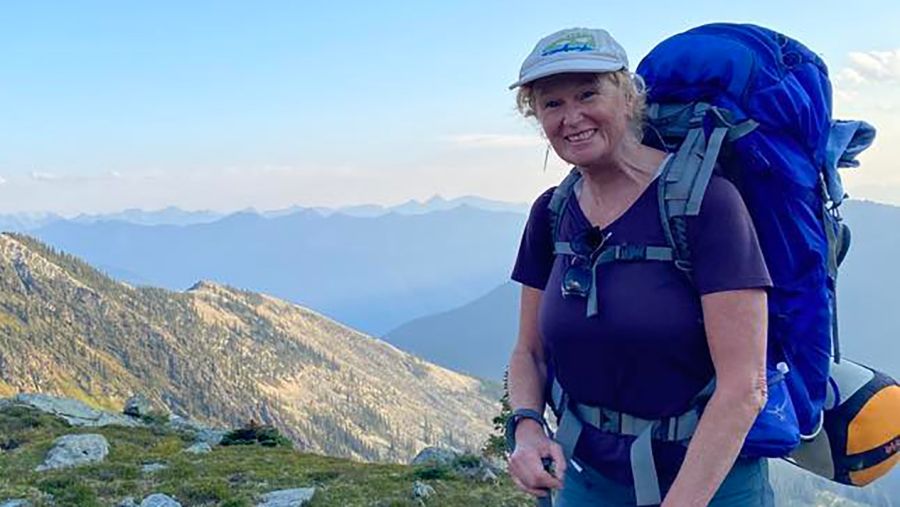
Dean Allison Alder reflects on her recent experience learning a new language in the course NSLX 101: Beginner's n̓səl̓xčin through Open Studies.
I love learning. I love the challenge and growth that can happen when I accept the discomfort of not knowing what’s coming and how it might change me. When opportunity arose to join Beginner's n̓səl̓xčin 1: Colville-Okanagan Salish, Selkirk College’s first accredited Indigenous language course, I thought, being an ally is important, learning words that have infused this land since time immemorial sounds interesting. Why not?
So, there I found myself, on the first sunny Saturday in September, leaving the early autumn warmth outside to join 13 fledgling n̓səl̓xčin speakers eager to begin learning the critically endangered language of the Sinixt people.
Immersed immediately, our instructors, Nʔiy̓sítaʔtkʷ and ʕAn̓n̓, introduced themselves in unfamiliar combinations of consonants, whispery whooshes and glottal stops. Their passion and commitment were evident, not only to teach this course at Selkirk College but also to bring this language back to life. My curiosity about how this undertaking might change me grew.
Powering Cultural Renewal through Language Revitalization
Through the Salish School of Spokane, Nʔiy̓sítaʔtkʷ and ʕAn̓n̓ (LaRae Wiley & Christopher Parkin) created the N̓səl̓xčin Fluency Transfer System and Curriculum Project, one of only a handful of comprehensive, sequenced Indigenous languages systems and curricula. The school uses dynamic language revitalization to power cultural renewal and build stronger, healthier communities. Salish School instructors shaped a learning journey for Selkirk College’s inaugural NSLX 101 class that extended far beyond the textbook’s words and phrases—providing a platform to learn about culture, history, humanity and ourselves.
Our group grew closer as we met each Saturday to tackle a dozen or so new phrases and 40–50 new vocabulary words. We greeted each other with Way̓, x̌ast sx̌l̓x̌ʕal̓t and bid Nínwiʔs ɬwikn̓tsn̓ when parting, we shared likes and dislikes, family configurations and exposed our humour, biases and quirks. We listened, repeated, sang, played, laughed and shook our heads as we tried to wrap our mouths around Salish words for being, doing and relating with one another and around our own gifted Salish names. We had no choice but to be bold and expose our shortcomings and burgeoning skills, as immersion learning means speaking aloud, regardless of how you think you sound.
So, speak we did, and by speaking the words, by learning their roots and meaning, our small class came to know more of the stories and values held within the words. We began to appreciate more about the impacts of colonization, particularly the declaration of Sinixt extinction by the Canadian government, and the tireless, multi-pronged quest to reverse that declaration for the Sinixt (Lakes) people.
So how have I changed from who I was before learning a smattering of n̓səl̓xčin? I feel different: moved, motivated, awed. Vulnerability and imperfection were normalized as I did my best to learn, pronounce and converse. Deep gratitude and respect ballooned as I experienced the results of the monumental passion and commitment devoted to revitalizing this language. Also, I can greet you in n̓səl̓xčin, tell you I like venison and huckleberries, and let you know that camus grows well in meadows.
Lim̓lm̓tx,
C̓əxʷc̓əxʷíc̓aʔ (osprey person) aka Allison Alder
Keep an eye on Open Studies for future offerings of NSLX 101 and NSLX 102.
Sustainable Development Goal (SDG) #4: Ensure inclusive and equitable quality education and promote lifelong learning opportunities for all.


